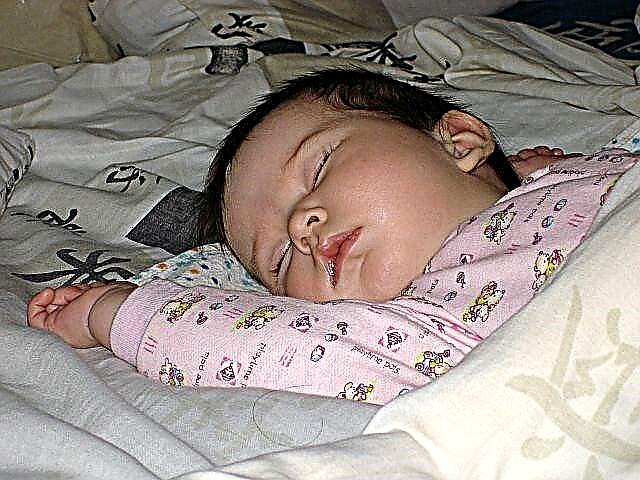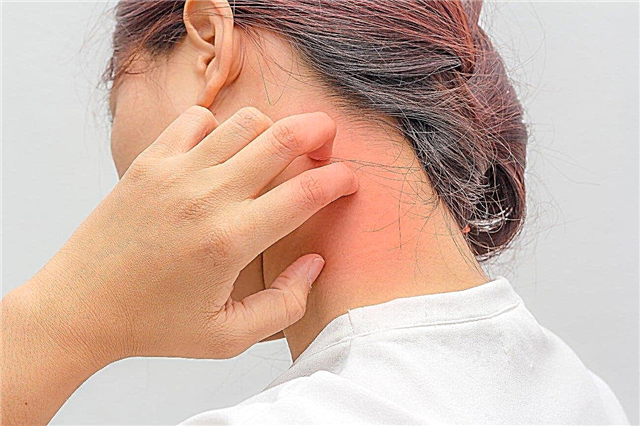Types
There are eight known herpes viruses that humans contract.
Herpes simplex virus
HSV-1 usually causes sores around the mouth and HSV-2 causes blisters on the genitals, however, these two types of virus can be associated with both sets of symptoms.
Varicella-zoster virus
This type causes chickenpox. The virus can also cause a recurrent skin infection called herpes zoster or herpes zoster. Shingles occurs when the dormant varicella-zoster virus from an initial bout of chickenpox reactivates. Like HSV-1, herpes zoster loves to infect skin and nerve cells. Because a variety of nerve cells are often affected, lichen is usually much more severe than HSV recurrence. Lesions appear in the form of a strip that occurs on one side of the body, and are often accompanied by tingling, itching, and severe pain.

Epstein-Barr virus
The virus is the main cause of infectious mononucleosis. The disease most commonly affects older children. Early childhood infection is common but often underdiagnosed.
Cytomegalovirus
CMV is also the cause of mononucleosis. In children with a healthy defense system, the virus may not even cause any manifestations. In immunocompromised individuals, symptoms will vary according to the age and immune status of the child during or after infection. This is a common cause of congenital infections.

Human herpes virus 6
HHV-6 causes roseola (a condition characterized by severe fever and skin rashes in young children) and many other conditions associated with high fever at this age. This infection accounts for many of the cases of infantile febrile seizures.
Human herpes virus 7
HHC-6 is closely related to HHC-7. Like other types of herpes, they are very common: most people in the world have been infected with them. HHV-7 also causes roseola, but it is unclear what other clinical manifestations this virus causes.
Human herpes virus 8
HHV-8 was recently discovered in tumors called Kaposi's Sarcoma. They are found in patients with AIDS. In healthy people, they are very rare. HHV-8 can also cause other cancers, including lymphomas (cancer of the lymph nodes), associated with AIDS.
Infection routes
Most babies are protected by their mothers' antibodies. However, this protection is sometimes insufficient. Babies usually contract herpes in one of two ways: vertical or horizontal transmission.
Vertical path involves the transmission of the virus through the birth canal. This can happen if the mother has a genital herpes infection.
Remember that HSV-1 and HSV-2 can affect the genitals. Even when the mother does not have an outbreak, the virus can be released from cells in the birth canal and transmitted to the baby, usually through the eyes or abrasions. This is the most common form of transmission of the virus in newborns.
In some very rare cases, the virus can actually be passed through the placenta to the baby during pregnancy. This is called "intrauterine infection" and can cause spontaneous abortion, growth retardation, and hydrocephalus. Intrauterine infection usually occurs only when the mother first contracted herpes during gestation.
Horizontal transmission involves infection from another person after birth. The source can be a shared toy, cup, or utensil. A kiss from an infected relative or friend can also lead to infection.
Finally, herpes can be transmitted through breast milk if the mother is infected.
Symptoms
The manifestations of herpes depend on the severity of the infection, its location, and the stage of the disease. For the most part, herpes prefers mucous membranes. However, any area of the body can be affected by the virus.
Diseases of the oral cavity and pharynx
Herpetic gingivostomatitis (a disease of the oral cavity and gums) most often affects children from six months to 5 years. It is a very painful condition with sudden onset, pain in the mouth, drooling, refusal to eat or drink, and fever up to 40.0 - 40.6 ° C. The gums become noticeably swollen and sores can develop throughout the mouth, including the gums, lips , tongue, palate, tonsils, pharynx and skin around the mouth.
In older children, adolescents, the initial stage of herpes can manifest itself as pharyngitis and tonsillitis, and not gingivostomatitis. Signs of the virus can be indistinguishable from those of streptococcal pharyngitis and include fever, malaise, headache, sore throat, and white patches on the tonsils. The course of the disease is usually longer than with streptococcal pharyngitis.

Cold sore lips
This disease is the most common manifestation of HSV-1 recurrence. The lips are most commonly affected, although lesions sometimes appear on the nose, chin, cheek, or oral mucosa.
Skin diseases
In a healthy child or adolescent, herpetic skin diseases are usually the result of trauma to the skin with macro- or micro-abrasions and infection with infectious secretions. Pain, burning, itching, or tingling often precede a herpetic eruption. A cutaneous herpes infection leads to multiple discrete lesions and affects a large surface area.
Herpetic panaritium
This term is usually used to refer to herpes diseases of the fingers and toes. Among children, this condition is most often seen in infants and toddlers under 3 years of age with oral herpes infection, who often stick their hands in their mouths.
Disease onset is indicated by itching, pain and inflammation 2 to 7 days after exposure. The cuticle becomes sore and tender. The lesions and associated pain usually persist for about 10 days, followed by rapid improvement and complete recovery after 18 to 20 days.
Genital herpes
Classic primary genital herpes may be preceded by a short period of burning and tenderness before vesicles develop on mucosal surfaces or on the keratinous skin of the genitals, and sometimes around the anus or on the buttocks and thighs. Bubbles (vesicles) on the surfaces of the mucous membrane are short-lived and rupture, forming small, tender ulcers covered with yellowish-gray exudate and surrounded by an inflamed border.
Patients may experience quite severe inflammation of the urethra (urethritis) and urinary disorder (dysuria). Significant local pain and systemic symptoms such as headache, fever, and myalgia are common. The course of treatment for classic primary genital herpes from onset to complete healing is 2 to 3 weeks.
Recurrent genital herpes is usually less severe and shorter than the primary infection. Some patients experience prior pain, burning, and tingling at the site where blisters subsequently develop.
Genital diseases caused by HSV-1 and HSV-2 are indistinguishable, but HSV-1 causes significantly fewer subsequent episodes of recurrent infection; therefore, knowing which virus is causing the infection is of great prognostic value.
Eye diseases
Herpes can affect the conjunctiva, cornea, or retina. Conjunctivitis or keratoconjunctivitis (conjunctiva and cornea are inflamed) is usually unilateral. The conjunctiva appears to be edematous, but there is seldom a purulent discharge. Vesicles can be seen around the edges of the eyelid and on the skin around the eyes. Patients usually develop a fever.

Diseases of the central nervous system
Herpetic encephalitis is almost always caused by HSV-1. The disease can present with nonspecific symptoms, including fever, headache, stiff neck, nausea, vomiting, and seizures. Uncontrolled illness progresses to coma and death in 75% of cases.
Herpes in newborns
Neonatal herpes is never asymptomatic. Its clinical presentation reflects the timing of infection, the place of entry of the infection and the degree of spread. Babies with intrauterine infection usually have vesicles and scars on the skin, keratoconjunctivitis, and microcephaly or hydrocephalus. Few babies survive without therapy, and those who have received treatment usually have serious consequences.
Babies who are infected during or after childbirth have 1 of the following 3 types of diseases:
- disease localized to the skin, eyes, or mouth;
- encephalitis with or without skin, eye, and mouth disease;
- spread of infection involving multiple organs, including the brain, lungs, liver, heart, adrenal glands, and skin.

What does herpes look like on a child's body
Stage 1: Skin redness (Prodromal stage)
As soon as the herpes virus comes into contact with the skin, it causes a tingling sensation and slight tightening of the affected area. Then the affected skin area turns red. After a few days (1 to 2 days), the child may experience severe itching and / or irritation of the affected area. Some people complain of painful sensations in this area.
Stage 2: Inflammation and edema
There are not many people who can recognize the prodromal stage, so a quick diagnosis at this stage is rare. If the early signs of a cold sore outbreak, such as redness and itching, are not graded and treated at the right time, then the skin area will swell and become inflamed. Although the swelling of the affected area can be very severe, in some cases it is not noticeable.
Stage number 3: eruption of vesicles
Soon, small red bumps appear at the site of the swelling, which transform into small bubbles filled with liquid. This is the stage when noticeable symptoms of herpes first appear. Blisters are transparent, whitish or reddish in color, they appear in clusters or scattered (rarely). Blisters that are tender and painful to the touch usually remain for 2 days.

Stage 4: Appearance of ulcers
This stage only lasts one day. After the bubbles burst and fluid begins to flow out of them, moist ulcers develop in the area of the affected skin. This is the most painful and contagious stage of herpes. Wet ulcers are reddish, like fresh wounds, and very sensitive to touch. They rise slightly above the level of the surrounding skin, which is not affected by inflammatory changes.
Stage 5: Drying and crusting
This stage opens the initial phase of ulcer healing. When wet sores begin to heal, a dry crust forms that eventually hardens. When the sores have completely disappeared, new skin develops under the crust. The duration is 2 - 3 days. This stage is characterized by increased dryness, pain and itching. Excessive dryness can cause skin cracks and bleeding.
Stage 6: Complete Healing
Over the next few days, the crust on the skin dries and gradually falls off, leaving new skin underneath. Herpes sores usually heal without scarring the skin. However, a scar may remain if the crusts are removed before complete healing. In case of scarring, a topical ointment for scars is used. This last stage of herpes can last 4 days. Painful to the touch, blisters usually remain for 2 days.
Treatment
In children, herpes will go away without treatment in about one to two weeks. There are a number of ways to speed up the healing process.
Children at risk of complications are given antiviral therapy, often in a hospital. To shorten the course of the disease and reduce the likelihood of spreading the virus, your doctor will prescribe oral antiviral drugs or topical agents. Systemic medications help shorten the time of illness, and creams and ointments reduce symptoms. Three antiviral drugs are available for the treatment of herpes, namely acyclovir, valacyclovir, and famciclovir. All 3 are available for oral administration, but only acyclovir is available as a suspension.
- Acyclovir has the lowest bioavailability and therefore requires more frequent dosing.
- Valacyclovir and famciclovir have very good oral bioavailability and are taken once or twice a day.
Acyclovir and penciclovir are also available in the form of an ointment and cream, but they provide limited benefit in patients with recurrent mucocutaneous herpes.
Only acyclovir is available as an intravenous solution.
Early initiation of treatment results in maximum therapeutic benefit. All 3 drugs are safe for use in children.
Other home treatments include using a cold compress and taking pain relievers.

Prevention
The standard prevention of herpes is hygiene and protection of the child from hypothermia. Prevention of neonatal infection is somewhat more difficult. There are a number of measures:
Before planning a pregnancy the woman should be examined. If you have herpes, it should be treated:
- the gynecologist should regularly monitor the condition of the birth canal of a pregnant woman, since herpes may recur during gestation;
- if the outbreak occurs before the 36th week of pregnancy, the expectant mother will be prescribed standard antiviral therapy with acyclovir. After such treatment, childbirth can occur naturally;
- if the infection appears after 36 weeks of pregnancy, a caesarean section is recommended.
After birth the main preventive measure is long-term breastfeeding. Do not breastfeed your baby if the herpes rash is right on top of her.
In future the child should be protected from contact with carriers of the infection. Don't let him come in contact with people with characteristic sores on the lips.

Conclusion
Most diseases caused by herpes are self-limiting, lasting from a few days (for recurrent infections) to 2 to 3 weeks (for primary infections). Some herpes diseases can be serious and, without prompt antiviral therapy, can have dire consequences. Life-threatening conditions include neonatal herpes, herpes encephalitis, and herpes in patients with a weakened defense system.



